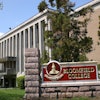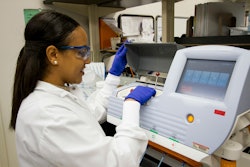Dental student Hector Godoy easily relates to his patients at a University of California, Los Angeles clinic. Like many of them, Godoy never went to a dentist as a child. His exposure to medical professionals was limited to community clinics when home remedies failed. “There weren’t opportunities for check-ups or preventive medicine,” he says.
When he graduates from UCLA next spring, he plans to work in an underserved area of Los Angeles. In the eyes of health care educators nationally, Godoy is a de facto role model, the kind of student sought for a pipeline of underrepresented minorities (URMs) whose career can improve access to health and wellness services among disadvantaged populations.
“Overwhelmingly, these individuals go back to their communities to work,” says Dr. Michael Ellison, minority affairs committee chair for the National Association of Advisors for the Health Professions.
Yet, ever-climbing student fees at all UC campuses make it more challenging to attract individuals like Godoy, a first-generation college student, to health-science and related graduate-level programs. Along with a 32 percent systemwide fee increase that UC regents approved less than a year ago in response to an ongoing state fiscal crisis, regents approved myriad wide-ranging spikes for professional degree programs that ran as high as 64 percent. Professional degree fees (PDFs) make up a portion of the total retail price for a graduate education.
A father to three children, Godoy figures to amass about $160,000 in debt, close to what the average UCLA dental student borrows nowadays. However, his fees of $36,794 for the next academic year, excluding housing and books, are about 16 percent higher than last year’s bill.
Widespread public perception is that graduate school is a luxury rather than a necessity, although some professions — dentists, doctors and pharmacists, to name a few — mandate more than a bachelor’s degree.
Furthermore, people living in underserved communities everywhere have come to rely on the clinical and field work of graduate-level, health-science programs. As an example, UCLA’s student-staffed dental clinics record a total of 30,000 patient visits annually. Future professionals like Godoy get hands-on experience while patients are charged only about half of what a private dentist can command. Many patients are uninsured; some know limited English.




















